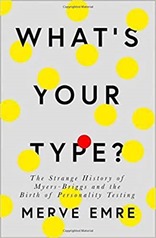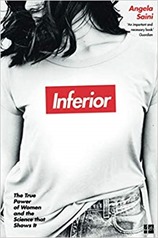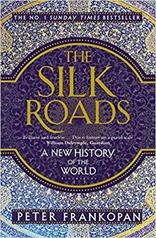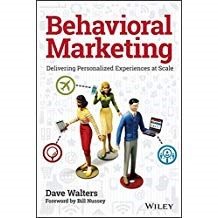 What’s your type? by Merve Emre is described well by it’s subtitle “The Strange History of Myers-Briggs and the Birth of Personality Testing”. It is the story of Katherine Cook Myers (1875-1968) and her daughter Isabel Briggs Myers (1897-1980) who developed the test based on the foundations her mother laid.
What’s your type? by Merve Emre is described well by it’s subtitle “The Strange History of Myers-Briggs and the Birth of Personality Testing”. It is the story of Katherine Cook Myers (1875-1968) and her daughter Isabel Briggs Myers (1897-1980) who developed the test based on the foundations her mother laid.
The Myers-Brigg Test presents users with a set of forced choice questions which it then converts into 16 personality types based on four axes: introversion/extraversion (E/I), thinking/feeling (T/F), sensing/intuition (S/N) and judging/perceiving (J/P). Your type is denoted by the four letters one from each axis.
I’m fairly sure I’ve taken a Myers-Briggs test in the past and I’ve completely forgotten the outcome, I’ve taken a related test more recently. For which I came out an “architect” – INTJ. I am proud of my label!
The story starts with Katherine Myers. It is fair to say that she was an unusual mother, writing a column on child-rearing “Diary of an obedience-curiosity mother” which was published for many years in the American Magazine. These were the notes of her highly structured programme of child-rearing, as applied to her daughter. They appear to have picked up a theme of the time, in using knowledge for self-improvement. There was a similar movement in Victorian Britain.
This episode leaves you with the impression of a fiercely intelligent woman channelling all her energy into the only outlet the society of her time gave her: the raising of her daughter. She had two other children who died young. Isabel’s marriage and departure was clearly a wrench for both mother and daughter.
Katherine then “found Jung”, the psychologist Carl Jung – more specifically Jung’s psychological types. This fitted with her desire to classify people, and find a place for each in society. Her mission then became to render Jung’s types into something more useable. She corresponded with Jung, and met him once. There was clearly a degree of hero worship and obsession in her interactions with him.
Katherine’s approach to type was very much an individualised “expert” one, Isabel’s contribution was democratisation – making a questionnaire and answer scheme such that customers could apply the tests themselves. Like her mother, Isabel was clearly very capable – winning a prize for her novel “Murder Yet To Come” in 1929. A second novel, “Give Me Death” sounds profoundly racist, it features a Southern family whose members commit suicide on discovering that their line contains “negro blood”. This reflects racist/eugenicist overtones in some of Katherine’s writings.
During the Second World War Isabel’s test was used at the Office of Strategic Studies (OSS) as part of a battery of tests applied to evaluate the suitability of people as spies. During the war, Katherine, amongst others tried to “diagnose” Adolf Hitler with a view to predicting the possible outcomes for the war. Unsurprisingly there predictions were not particularly useful.
After the war Myers-Briggs became involved in the Berkeley Institute of Personality and Assessment Research. This followed on from the OSS work and saw relatively small numbers of candidates taken on weekend “house-parties” for assessments. The candidates were a wide range of the great and the good, but scarcely any women.
Later the Myers-Brigg test moved to the East coast, to the Princeton Educational Testing Service (ETS) which designed and administered the SAT. For a number of years they tried to give the Myers-Briggs test a solid scientific foundation but were ultimately not satisfied with it. The original Jungian psychological types were somewhat subjective, and the Myers-Briggs test had a habit of providing different types on retesting.
The Myers-Briggs test was ultimately to find a home in the Centre for the Applications of Psychological Type (CAPT) which Isabel founded with Mary McCaulley, a psychologist from the University of Florida. Uptake of the Myers-Briggs Test grew enormously in the years after Isabel’s death in 1980.
The new thing that the Myers-Briggs Test introduced was a degree of dispassion in its outcomes. None of the types are described as “bad”, or really can be construed as such. The tenor of the test is positive. It is about finding ones place in society and the world of work. This may run counter to individualistic ideals but it struck a chord with many organisations and individuals. It is an astrology for our times, it gives us a team to join, and guidance on how to live our lives.
In some ways the strongest impression I got from the book was of the Myers-Briggs testing regime as a modern day cult, this is only addressed directly by the author in the Introduction and Conclusions regarding her travails with the CAPT, the current guardians of the Test.


 Milk of Paradise
Milk of Paradise
